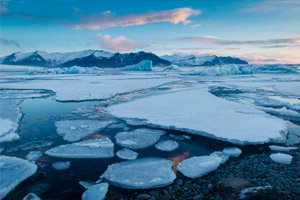
All iLive content is medically reviewed or fact checked to ensure as much factual accuracy as possible.
We have strict sourcing guidelines and only link to reputable media sites, academic research institutions and, whenever possible, medically peer reviewed studies. Note that the numbers in parentheses ([1], [2], etc.) are clickable links to these studies.
If you feel that any of our content is inaccurate, out-of-date, or otherwise questionable, please select it and press Ctrl + Enter.
Arctic sea turns out to be a potential treasure trove of new medicines
Last reviewed: 02.07.2025
 ">
">Scientists have discovered new compounds in Arctic Sea bacteria that could fight antibiotic-resistant infections and pave the way for next-generation drugs.
The problem of antibiotic resistance and new opportunities
Antibiotics are the basis of modern medicine; without them, treating infections and performing surgeries would be extremely risky. However, every year we face a growing problem of bacterial resistance to antibiotics, while the pace of discovery of fundamentally new antibiotics lags significantly behind.
Exploring new habitats
There is reason for hope: 70% of all licensed antibiotics come from actinobacteria living in soil, but most habitats on Earth have not yet been explored. Searching for new antibiotics among actinobacteria in other, poorly studied places, such as the Arctic Sea, is a promising strategy. Especially if new molecules can be found that do not kill bacteria directly, but reduce their virulence (ability to cause disease), making it more difficult for resistance to develop and reducing the likelihood of side effects.
Advanced screening methods reveal new compounds
“In our study, we used high-sensitivity screening (FAS-HCS) and Tir translocation assays to specifically identify antivirulent and antibacterial compounds from actinobacteria extracts,” says Dr. Päivi Tammela, professor at the University of Helsinki, Finland, and lead author of the study published in the journal Frontiers in Microbiology. “We found two distinct compounds: a large phospholipid that inhibits the virulence of enteropathogenic E. coli (EPEC) without affecting its growth, and a compound that inhibits bacterial growth, both from actinobacteria isolated from the Arctic ocean.”
To analyze drug candidates, the team conducted an automated screening system designed to work with complex microbial extracts. The researchers developed a new set of methods that allow them to simultaneously test the antiviral and antibacterial effects of hundreds of unknown compounds. They chose as a target a strain of EPEC that causes severe diarrhea in children under five, especially in developing countries.
Discovery of antivirulent and antibacterial compounds
The compounds studied were obtained from four species of actinobacteria isolated from invertebrates collected in the Arctic Sea off Svalbard during an expedition of the Norwegian research vessel Kronprinz Haakon in August 2020. The bacteria were then cultured, the cells were extracted and their contents were separated into fractions. Each fraction was tested in vitro for EPEC adhering to colorectal carcinoma cells.
The researchers discovered two previously unknown compounds with distinct biological activities: one from an unknown strain (T091-5) of the genus Rhodococcus and the other from an unknown strain (T160-2) of the genus Kocuria. The compound from strain T091-5, identified as a large phospholipid, demonstrated a potent antivirulence effect by inhibiting actin pedestal formation and EPEC binding to the Tir receptor on the host cell surface. The compound from strain T160-2 showed strong antibacterial properties, inhibiting the growth of EPEC bacteria.
Promising results and next steps
Detailed analysis showed that the phospholipid from strain T091-5 did not inhibit bacterial growth, making it a promising candidate for antiviral therapy as it reduces the likelihood of resistance development. At the same time, the compound from strain T160-2 inhibited bacterial growth and will be further studied as a potential new antibiotic.
HPLC-HR-MS2 methods were used to isolate and identify these compounds. The molecular weight of the phospholipid was around 700 and it disrupted the interaction between EPEC and host cells. “The next steps include optimizing the culture conditions for compound production and isolating sufficient amounts of each compound for further characterization of their structure and biological activity,” Tammela added.
